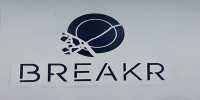In SaaS, usage-based pricing (UBP) has swiftly moved from the margins to the mainstream. The promise of faster revenue growth and a more efficient land-and-expand business model entices UBP converts. However, increasing revenue growth is not as easy as altering prices. UBP is a company-wide initiative that necessitates abandoning the conventional SaaS metrics strategy. Usage-based revenue is product-led growth (PLG) in its purest form, according to one perspective.
Consider Snowflake, a data-warehousing firm that went public in 2020 and now has a market capitalization of $100 billion. Despite the fact that common wisdom implies SaaS firms should aim for net retention of 100% or more, Snowflake boasts a staggering 169 percent net retention, thanks to a successful consumption-based pricing strategy.
The company’s net retention increased from 158 percent in the second quarter of fiscal 2021 to 158 percent in the second quarter of fiscal 2022. A $1,000 initial investment from a new client might hypothetically convert into $13,000+ after five years for Snowflake. So, with a new logo, how much should I spend on customer acquisition (CAC)?
Should I compensate sales for the original investment, or should salespeople benefit from the increased client base? How should I spend money on product development and engineering to guarantee that consumers get more value when their expenses rise? Similar questions are posed by many usage-based businesses.
Leading usage-based businesses have a great potential to expand at a rapid rate with their existing clients. According to OpenView statistics, top-quartile net retention for those with a mostly usage-based pricing model was 122 percent, compared to 110 percent for those with usage-based subscription tiers and 109 percent for those with no usage-based pricing.
However, such growth is not generally the consequence of additional items sold or sophisticated capabilities locked behind up-sell packages. As clients grow more successful and discover new use cases, they increase their consumption. According to Twilio’s 2020 investor presentation, the firm has a 132 percent net retention rate across an amazing base of 200,000+ active customers, and roughly, 85 percent of Twilio’s net expansion comes through consumption, with only 15% coming from new products.
















